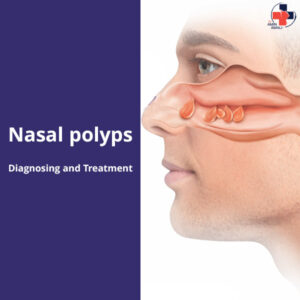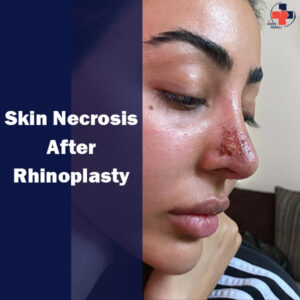Rhinoplasty, commonly known as a nose job, is a surgical procedure that reshapes the nose for aesthetic or functional purposes. While the prospect of a revamped nose might be exciting, the recovery process involves crucial steps, and one essential element is the nasal splint. This article delves into the world of nasal splints after rhinoplasty, providing insights into their function, types, and how to care for them effectively.

The Role of the Nasal Splint
Imagine your nose as a delicate sculpture. After the meticulous work of rhinoplasty, the nasal splint acts as a temporary cast, providing crucial support in several ways:
- Stabilization: Following surgery, the nasal tissues are fragile and require immobilization to ensure proper healing and minimize the risk of displacement. The splint applies gentle pressure, preventing unwanted movement and maintaining the new structure.
- Shape Preservation: Rhinoplasty often involves reshaping the nasal cartilage and bone. The splint acts as a mold, holding the newly formed structures in their desired position until they heal and solidify in their new form.
- Swelling Reduction: Surgery inherently triggers inflammation. The splint offers external support, minimizing swelling and promoting a more comfortable healing experience.
- Protection: Accidents happen, and the splint acts as a shield, protecting the vulnerable nose from accidental bumps or other impacts during the initial healing stages.
Types of Splints Used After Rhinoplasty
There are two main types of splints used after rhinoplasty:
- External Splints: These are the most common type, typically worn for 7 – 14 days after surgery. They are often made of:
- Metal: Often constructed from aluminum, these splints offer excellent support and can be easily molded to the individual’s nose for a custom fit.
- Plastic: Lightweight and becoming increasingly popular, plastic splints come pre-formed in various shapes or can be molded for a more personalized fit. They offer a more comfortable experience compared to metal splints.
- Thermoplastic: These innovative splints are made from a material that becomes pliable when heated. Once molded to the nose and cooled, it hardens, providing a secure and comfortable fit.
- Internal Splints: Used less frequently compared to external splints, these are inserted inside the nose through the nostrils. They are primarily used for specific situations, such as:
- Septoplasty: This additional procedure is sometimes performed alongside rhinoplasty to correct a deviated septum. Internal splints help stabilize the septum in its new position.
- Supporting specific structures: In some rhinoplasty cases, internal splints might be used to provide targeted support to specific areas like the tip of the nose.
The choice of splint type depends on several factors, including:
- The complexity of the surgery: More extensive procedures might require a sturdier splint like metal, while simpler procedures might favor plastic or thermoplastic options.
- Surgeon’s preference: Different rhinoplasty surgeons may have experience or expertise with specific splint materials.
- Patient’s comfort and tolerance: Some individuals might find metal splints uncomfortable, while others might prefer their sturdiness.
Caring for Your Nasal Splint: A Guide to a Smooth Recovery
Proper care of your nasal splint after rhinoplasty is essential to ensure optimal healing and prevent complications. Here are some key points to remember:
- Cleaning: Gently clean the outer surface of the splint as instructed by your doctor, typically using mild soap and water on a washcloth. Avoid submerging the splint in water.
- Touch with caution: Avoid touching the splint excessively to minimize the risk of introducing bacteria.
- Leave it alone: Resist the urge to remove or adjust the splint yourself. It should only be removed by your doctor at the scheduled appointment.
- Monitor for issues: Be attentive to any signs of discomfort beyond mild expected soreness. Excessive pain, swelling, redness, or difficulty breathing are potential red flags and require immediate contact with your doctor.
- Minimize activity: Avoid strenuous activities that could lead to sweating or accidental bumps to the nose.
- Hydration is key: Staying adequately hydrated promotes overall healing and can also help minimize nasal congestion, which can be uncomfortable with a splint.
Beyond the Splint: Additional Recovery Tips
While the nasal splint plays a crucial role, it’s important to remember that it’s just one piece of the recovery puzzle. Here are some additional tips for a smooth and successful recovery:
- Elevate your head: Sleeping with your head slightly elevated can help reduce swelling and promote better drainage.
- Apply cold compresses: Applying cold compresses to the sides of your nose can help minimize swelling, especially during the first few days.
- Maintain a balanced diet: Eating nutritious foods rich in vitamins and minerals will support your body’s healing process.











